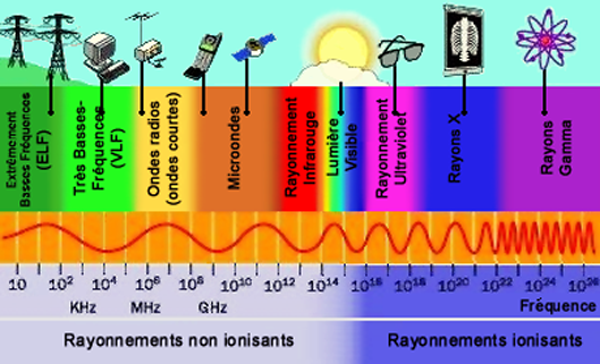Hello friends of steemit this post is referred to a great idea that occurred to me regarding the importance of knowing the origin of color in photography and the relationship that currently exists between this knowledge and the contest sponsored by the witness @cervantes, which takes as reference the quality of the photographs, starting from its focus to the resolution of each image proposed in the contest.
THEORY OF COLOR
The first concept that we must understand is that it is really light, our world is constantly traversed by a multitude of electromagnetic radiation, that is, by waves originating in generating sources and that are traveling until they gradually lose power and dissipate. in other forms of energy. There are radio waves, x-rays, infrared, light waves etc.
Well, light is the source of the electromagnetic spectrum that the human eye is able to detect, that is, it is that set of waves whose wavelength is able to be perceived by us, this group of waves is divided into its once in a series of subgroups among themselves; colors.
Let's see how we can identify the different colors of a light wave as a function of the wavelength of the radiation that transmits light.

Therefore we already know that it is light. The light in a wave that we can distinguish with our eye. And what are the colors? For if the light is composed of those waves that are between 400 and 700 nm wavelength, each color is a visible wave with a specific wavelength between said limits.
In such a way that if our eyes receive wavelengths of 650-690 nm, what we would be seeing would be a red light and if our eyes receive wavelengths of close to 400 nm, what we would be perceiving would be a violet light.
Now we could ask ourselves what makes a color have one wavelength or another, to understand this we must know that when a light wave (white light) reaches a green surface, for example it will bounce and reach our eye. In that rebound, the shock on the surface will change its wavelength and acquire the green wavelength. Therefore we can see the different objects of different colors, depending on the pigment that surrounds the surface, that is to say in popular terms depending on the color of the paint with which the surface is painted.
Obviously, if the incoming light is not white, it will be modified by hitting the surface in a different way. The light is modified because it is formed by a hollow molecular structure that as the wavelength enters the surface and becomes Disperse loses in this way losing all its energy.
What happens when the surface is white? on the contrary, that all wavelengths observe wavelengths (corresponding to all colors) and do not reflect any. Our eye, not receiving any luminous information, interprets the signal as a black color.
There are many photographic aspects in which these concepts are determinant for example you have to know how to reflect the light on the different objects in order to capture the actual colors of a scene or to handle the concept of White Balance.
Thank you very much friends of steemit for allowing me to write about this very interesting topic, I hope to continue nourishing this platform of more information. Regards..
I actually wrote a post on color theory, too. It seems relevant to this and you might like the read! Cheers! https://steemit.com/photography/@icantstoprunning/bts-or-fairytale